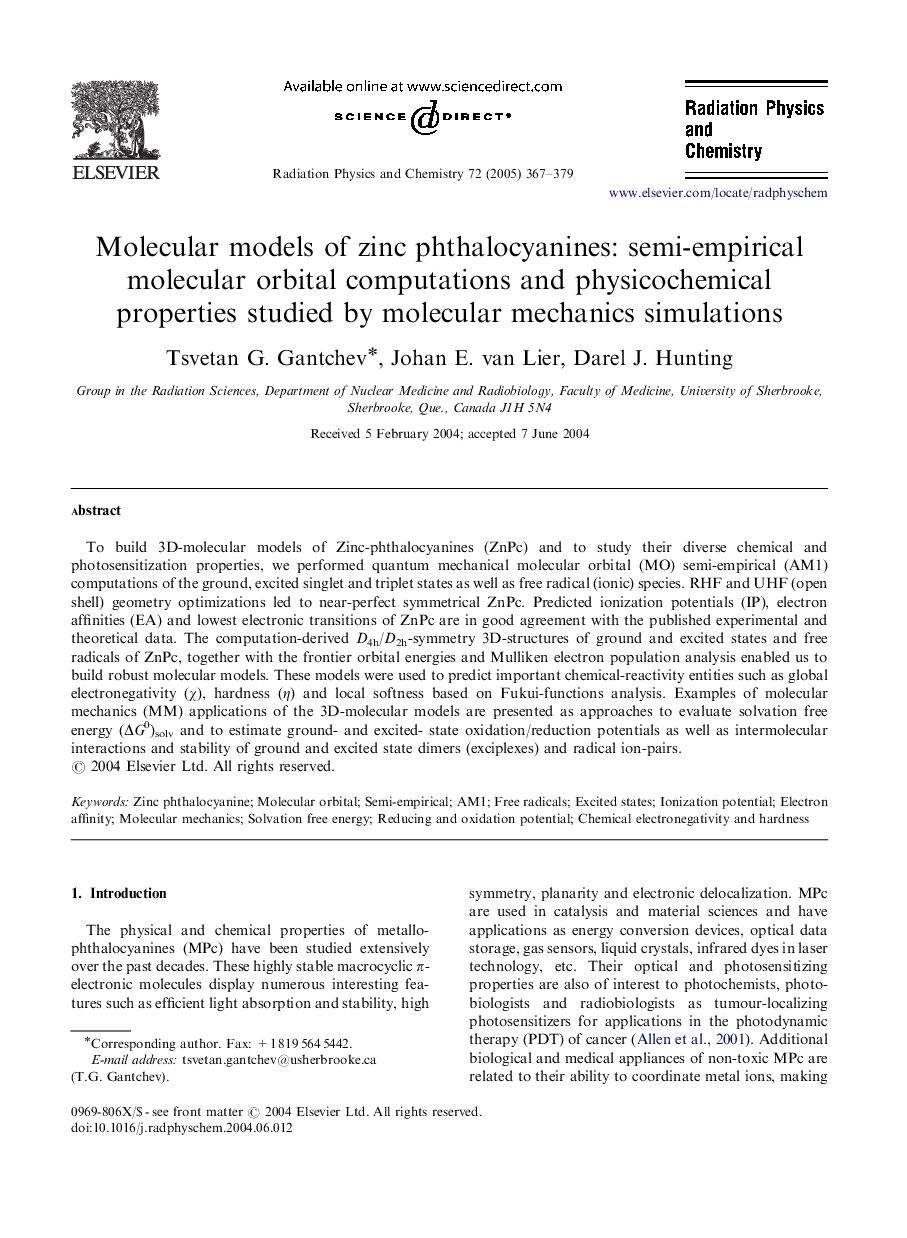| Article ID | Journal | Published Year | Pages | File Type |
|---|---|---|---|---|
| 9876385 | Radiation Physics and Chemistry | 2005 | 13 Pages |
Abstract
To build 3D-molecular models of Zinc-phthalocyanines (ZnPc) and to study their diverse chemical and photosensitization properties, we performed quantum mechanical molecular orbital (MO) semi-empirical (AM1) computations of the ground, excited singlet and triplet states as well as free radical (ionic) species. RHF and UHF (open shell) geometry optimizations led to near-perfect symmetrical ZnPc. Predicted ionization potentials (IP), electron affinities (EA) and lowest electronic transitions of ZnPc are in good agreement with the published experimental and theoretical data. The computation-derived D4h/D2h-symmetry 3D-structures of ground and excited states and free radicals of ZnPc, together with the frontier orbital energies and Mulliken electron population analysis enabled us to build robust molecular models. These models were used to predict important chemical-reactivity entities such as global electronegativity (Ï), hardness (η) and local softness based on Fukui-functions analysis. Examples of molecular mechanics (MM) applications of the 3D-molecular models are presented as approaches to evaluate solvation free energy (ÎG0)solv and to estimate ground- and excited- state oxidation/reduction potentials as well as intermolecular interactions and stability of ground and excited state dimers (exciplexes) and radical ion-pairs.
Keywords
Related Topics
Physical Sciences and Engineering
Physics and Astronomy
Radiation
Authors
Tsvetan G. Gantchev, Johan E. van Lier, Darel J. Hunting,
